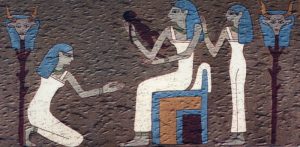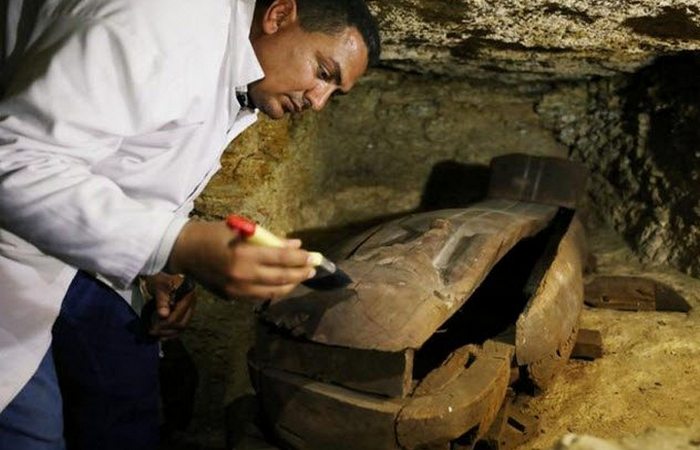errors that had
Riddle of Alexander of Macedon: Why “the flight of Tsar Alexander” was popular in Russia and throughout the Christian world
 A unique pectoral cross was found on the land of the former Drutsk faction, which emerged in the 11th century on the way “from the Varangians to the Greeks”. Crosses with the image of the Crucifixion from this period have come down to us a little, the image of the Crucifixion is much more common on encolpions, but this is not the main thing. Not for nothing, the cross from Drutsk was found on the way from the “Varangians to the Greeks”, some “Varangian”, Scandinavian features are present in the design of the cross, but this does not make it unique. Of particular interest is the image on the back of the cross.
A unique pectoral cross was found on the land of the former Drutsk faction, which emerged in the 11th century on the way “from the Varangians to the Greeks”. Crosses with the image of the Crucifixion from this period have come down to us a little, the image of the Crucifixion is much more common on encolpions, but this is not the main thing. Not for nothing, the cross from Drutsk was found on the way from the “Varangians to the Greeks”, some “Varangian”, Scandinavian features are present in the design of the cross, but this does not make it unique. Of particular interest is the image on the back of the cross.
The crucified Christ is depicted with closed eyes – it means already dead on the cross, but the head is straight. Above the cross nimbus is a depressed inscription ICXC. With the increase, the depressed points are visible not in the palms, but above the wrists, depicting nail heads. Continue reading
Found the 3700-year-old remains of a pregnant woman: How to give birth in ancient Egypt
 During excavations in southern Egypt, archaeologists discovered the skeleton of a pregnant woman. The burial is about 3,700 years old and, as scientists assume, the find may shed light on the history of fertility and survival in the ancient world. The fact is that the mother and her child supposedly died during childbirth. And for ancient Egypt, this is a very typical situation.
During excavations in southern Egypt, archaeologists discovered the skeleton of a pregnant woman. The burial is about 3,700 years old and, as scientists assume, the find may shed light on the history of fertility and survival in the ancient world. The fact is that the mother and her child supposedly died during childbirth. And for ancient Egypt, this is a very typical situation.
Literally the other day, the Egyptian Ministry of Antiquities officially reported that during the excavations carried out by the Italian-American group of archaeologists in the burial grounds not far from Aswan, a skeleton of a pregnant woman was found with a child stuck in the pelvis head down. Scientists have concluded that the death of an Egyptian woman, most likely, was caused by childbirth. Continue reading
History of the calendar
 Before the discovery of America and the beginning of its conquest by the Europeans, the territory of present-day Mexico, Guatemala and some other countries were occupied by the Aztec empire, which created a very original calendar. The year consisted of 18 months, 20 days each, and the “remaining” 5 days were considered “unlucky”. This calendar was carved on a huge stone. It had the shape of a circle, with a diameter of about 4 meters. Every day it was marked with its own symbol.
Before the discovery of America and the beginning of its conquest by the Europeans, the territory of present-day Mexico, Guatemala and some other countries were occupied by the Aztec empire, which created a very original calendar. The year consisted of 18 months, 20 days each, and the “remaining” 5 days were considered “unlucky”. This calendar was carved on a huge stone. It had the shape of a circle, with a diameter of about 4 meters. Every day it was marked with its own symbol.
History of the calendar
Creation of a modern standard calendar
Now there are many different calendar systems created by different nations and priests of different religions. Some of them are still limited. Continue reading



